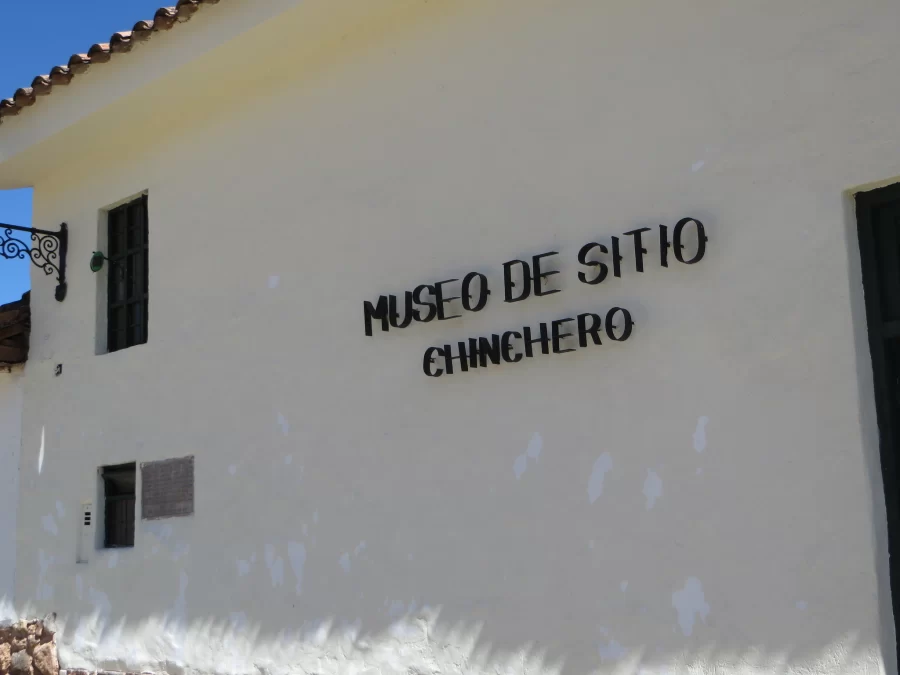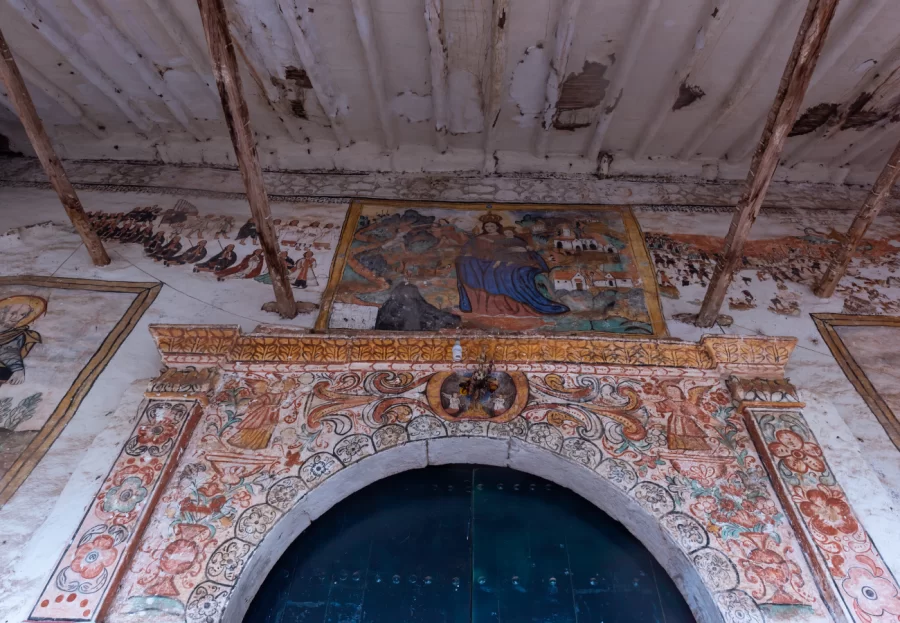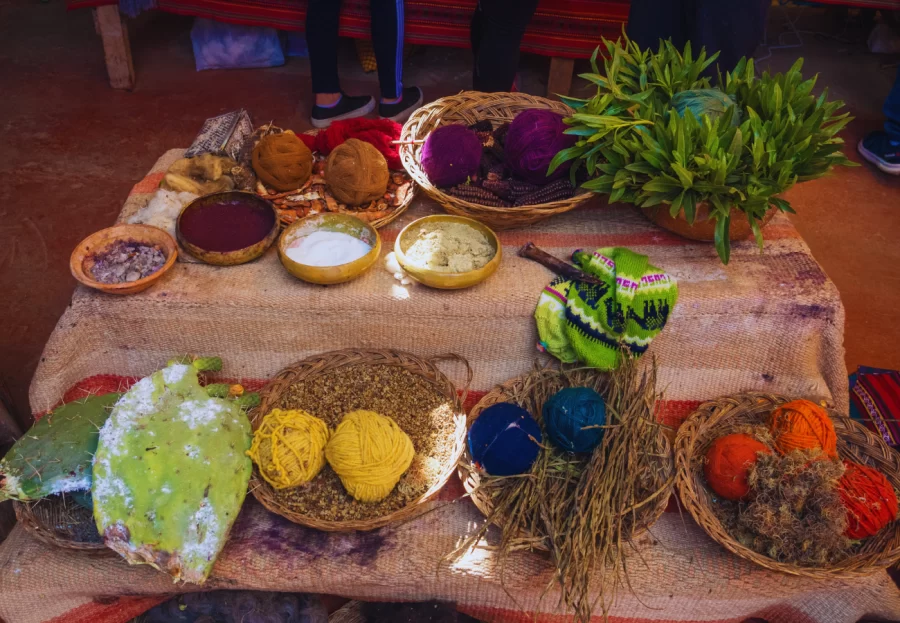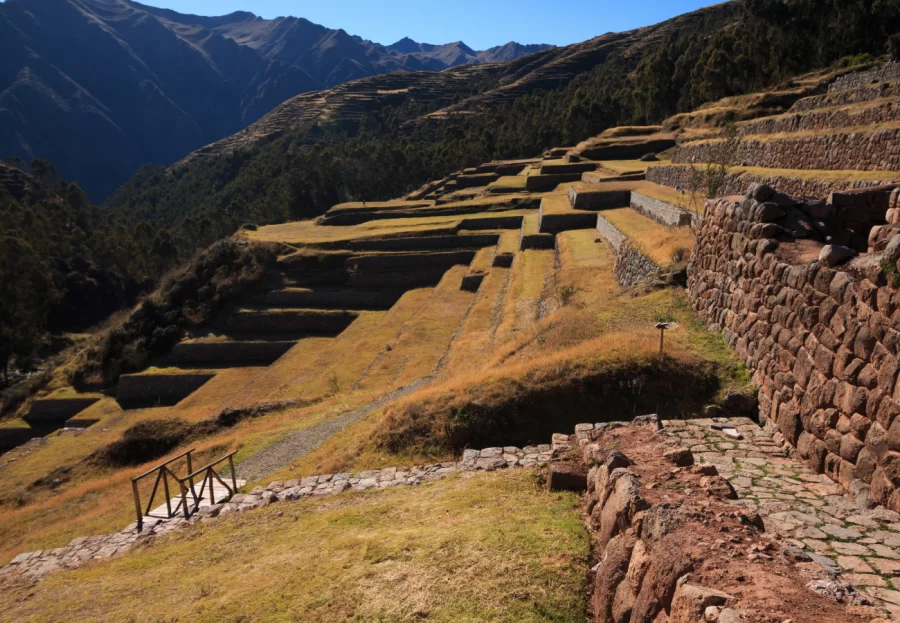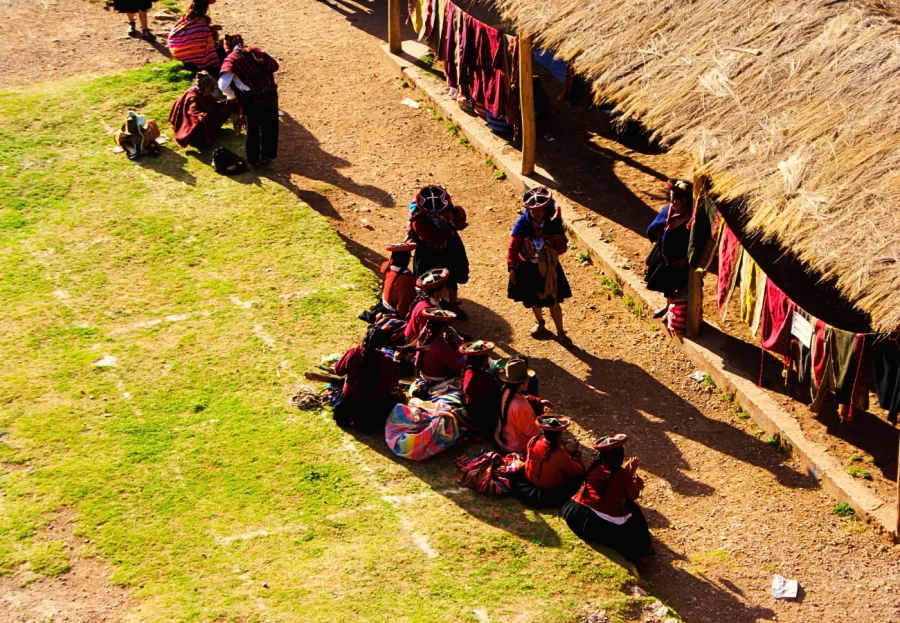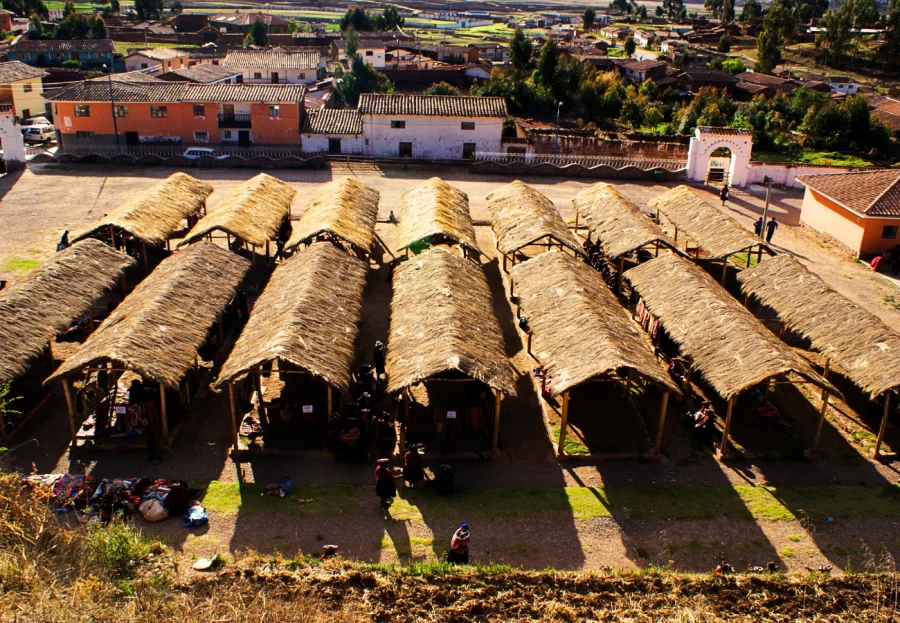The Archaeological Park of Chinchero is one of the Inca attractions that still preserves its culture and tradition in the Sacred Valley of the Incas; on the other hand, this paradise is known as the land of the rainbow during the rainy season.
When you get to the place you can see its colorful houses, the handicraft market, the Piuray lagoon, the textile centers and you can visit the museum sites of Chinchero, read on to learn about the things you can see and do in Chinchero.
Table of Contents
The town of Chinchero is known as the land of the Rainbow, surrounded by the beautiful Andes Mountains where you can see the tutelary Apus: snowy Salkantay, Veronica and Soray as well as the Huaypo and Piuray lagoons.
Historically, it is believed that the Inca Tupac Yupanqui built his palace in this place, as well as the church of the Virgin Nativity which is built on the Inca constructions, a clear example of the fusion of Inca and colonial.
At the same time we will see aqueducts, terraces for agriculture and livestock in order to produce potato, olluco, oca, quinoa, beans, etc.. In short, there are many traditional things that we can see in Chinchero, since it is considered a charming place with a lot of living cultural significance.
Another of its characteristics is that it still preserves its culture alive despite the progress of the modern world (technology), even continue practicing an ancestral tradition, where fairs are held only on Sundays in the Plaza de Armas of Chinchero, selling local products, handicrafts and especially textiles.
In addition to preserving the textiles, it also draws much attention to its archaeological remains such as the Inca Palace, the Colonial Church, the archaeological remains found on the site. That's not all we can see the local women who still wear the typical dress as well as men.
What we can see of the archaeological site of Chinchero is little, since the Spanish were the cause of its destruction and even emerged as a military center of Manco Inca during the confrontation of the Incas with the Spanish.
The palace of Tupac Yupanqui was built in 1480, according to the chroniclers; since during this time he was in command and it was located in Chinchero. It is said that Tupac Yupanqui died in 1493 and 43 years later the place was destroyed by the Spanish invaders.
Today there are still small traces of the Inca temple; however, you can still witness for example the wall that is all over the Plaza de Chinchero, there are also the 12 trapezoidal niches that were part of the Inca building.
If you are interested in visiting, don't think twice, I invite you to see all these incredible constructions and cultural traditions left by the Inca Empire.
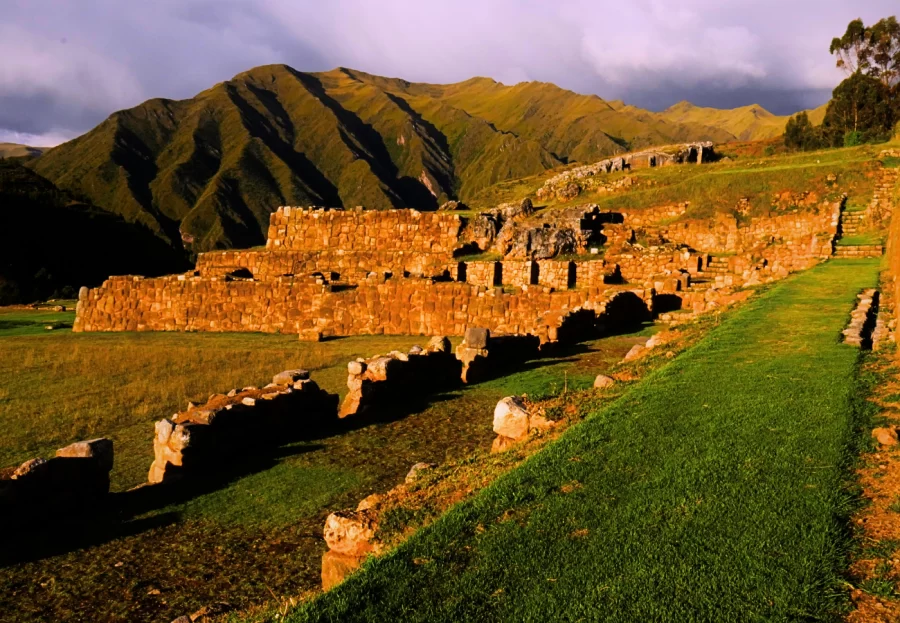
You can visit the Archaeological Center of Chinchero from Monday to Sunday between 7 in the morning and 4 in the afternoon. To enter you must purchase a Partial Tourist Ticket III (BTCPIII) that has a cost of 70 Peruvian soles and you can visit the Archaeological Center of Ollantaytambo, Pisaq, Chinchero and Moray.
This tourist ticket can be purchased in the city of Cusco at El Sol Avenue, main office Galerias Turísticas.
Chinchero is a small town, but with a lot of history and cultural value, the place practices many traditions since Inca times, and perhaps the striking thing you will see when you get there is to see the villagers dressed in their typical clothing, especially on Sundays craft fair that takes place in the square.
Below you will find everything you can see and do in Chinchero:
The traditional market of Chinchero holds a fair on Tuesdays, Thursdays and Sundays where they sell handicrafts including blankets, dolls, backpacks, jewelry, ceramics, musical instruments, among others.
All of them are made by local weavers who, through their weavings, tell us about their culture and daily life. Right there you can find the archaeological complex of Chinchero and take a tour around the place.
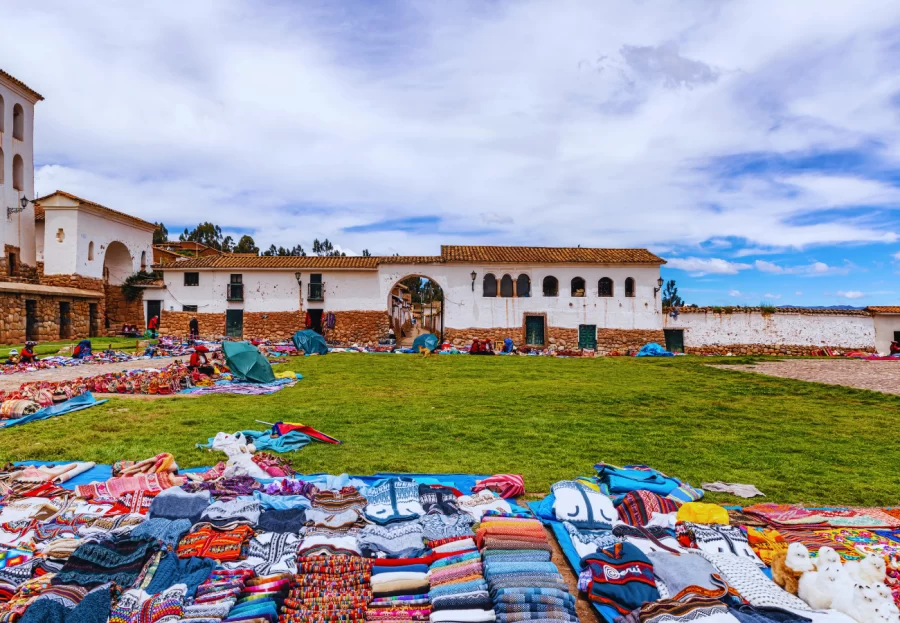
The Piuray lagoon is one of the most important water sources for the city of Cusco, because it provides 42% of drinking water to the city and is located in the town of Chinchero, near a stream Pacchaicoc.
However, in the place you can practice some sports such as kayaking, stand up paddle, cycling, hiking or ATV activities that are widely practiced by tourists in turn you can see the snowy Soray, Veronica and Salkantay.
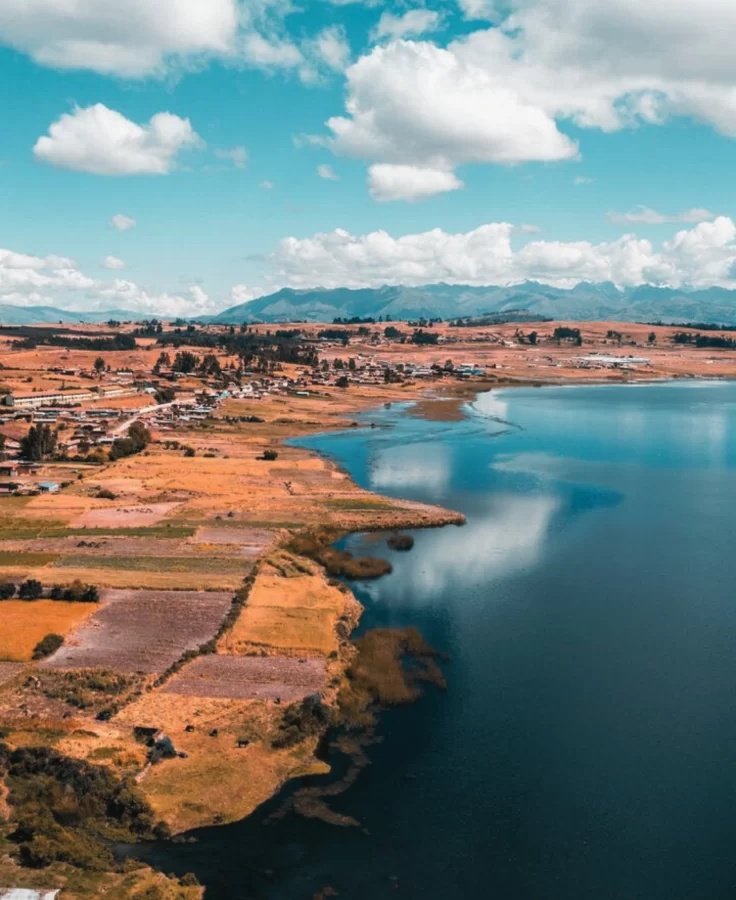
The textile centers are places where the villagers weave their different products in the traditional way, as their ancestors did. To begin weaving, they use llama and alpaca fiber, but first they go through a process that they explain to groups of tourists who visit the textile centers.
As I mentioned before, Chinchero is known for being an artisan town that still preserves its ancestral traditions, so in the place you will find several textile centers in which the artisans will make a brief explanation of the whole process they perform to recently weave and get the final product.
For example, they use natural roots to wash the wool of the animal and then dye it with other herbs, it is a whole process that must be followed and through the weaving workshops explained by the weavers you can learn about the whole process.
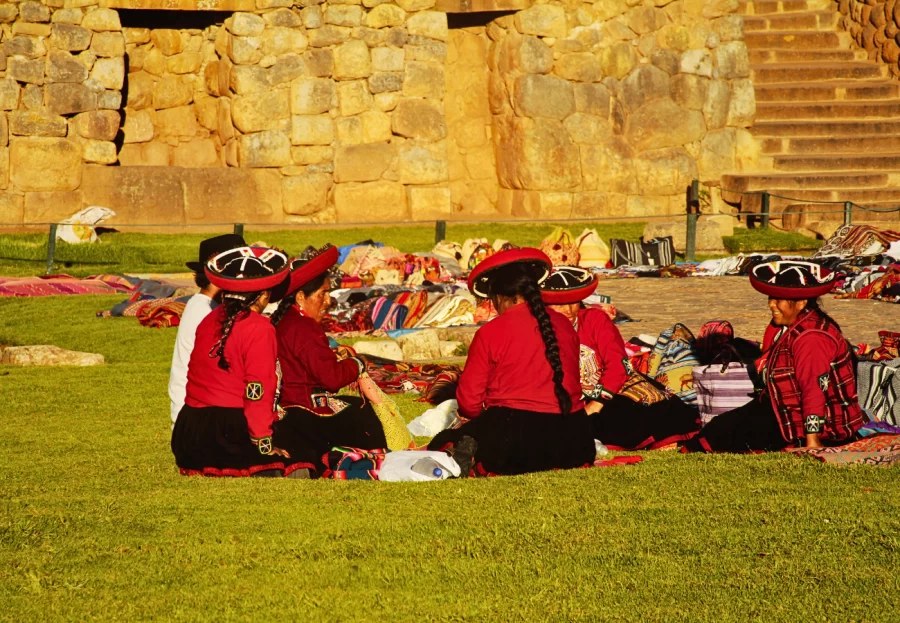
The Chinchero Site Museum was created in 1996, it is next to the Chinchero square. The museum has two exhibition halls where you will find different pieces including lithic, ceramics, textiles, agricultural implements and more.
Finally, visiting the museum of Chinchero site will allow us to know what our ancestors used in the different objects and that nowadays is very little seen; inside it we will also find pieces of art that belonged to outstanding authors and also there the typical dress of the area is exhibited.
